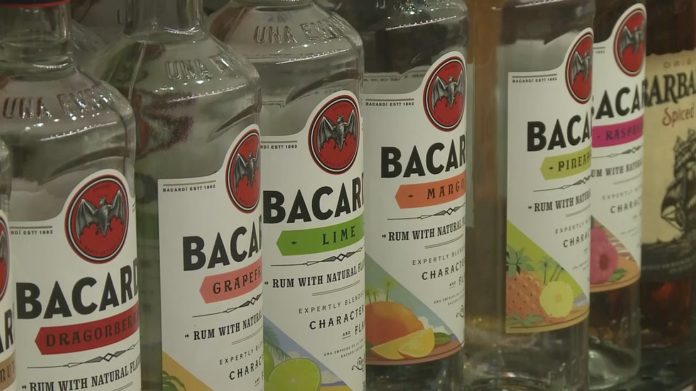/cloudfront-us-east-1.images.arcpublishing.com/gray/U5AMGXP3Z5DMPPNQWSU4HFTGZA.bmp)
MADISON, Wis. (WMTV) – Results from the 2021 Dane County Youth Assessment (DCYA) reveal a decrease in antisocial behaviors such as bullying, as well as a decrease in certain social behaviors such as drinking and vaping during the COVID-19 pandemic.
The survey, conducted every three years, captures the opinions, behaviors and attitudes of youth in grades 7 through 12. Nearly 27,000 students across 19 school districts competed this year’s survey, according to Dane Co.
Though bullying, alcohol use, vaping and sexual behavior were down, emotional health topics related to stress and anxiety were higher. Younger Dane Co. residents have been reporting increased problems with mental and emotional health overtime, but the trend accelerated this year.
“While we are seeing positive declines in bullying and vaping, we cannot ignore the emotional health concerns our young people report struggling with, particularly among female, LGBTQ+, and low-income youth,” Dane County Executive Joe Parisi said, while touting the DCYA for providing them with insights into kids’ attitudes and experiences.
While Dane Co. says it’s impossible to know the degree to which certain results are attributed to the pandemic, the results demonstrate the continued need for mental health services among adolescents.
Takeaways from the DCYA (as listed by the Dane Co. Executive’s Office):
Family and Home
- 7.7% of all 7th through 12th graders report skipping meals or eating less at least once in the past 30 days because their family did not have enough money for food. Youth reported 11.5% in 2018 and 12.2% in 2015.
Physical Health
- Youth who expressed they stayed up past 11pm three or more nights a week, also reported feeling more depressed, struggling more with homework, and skipping class more frequently than their peers.
- Teens, ages 11 to 17, who take their computers and other devices to bed with them most nights are 2.5 times more likely to be deprived of sleep during weekdays than teens who do not.
Mental and Emotional Health
- 77.5% of youth who identify as gay or lesbian, 70.5% of youth who identify as bisexual, and 63.9% of youth questioning their sexual orientation report feeling anxious “always or often” compared to 44.1% of youth who identify as straight/heterosexual.
- Youth whose families are struggling financially are more anxious (65.8%) than students who say money is not a problem for their family right now (33.1%).
- 44.0% of high school female youth report depressive symptoms—up from 34.2% in 2018, 30.3% in 2015, and 25.6% in 2012.
- 20.6% of all high school youth report they are receiving mental health services. 64.6% of high school students reporting depression are not receiving mental health services.
School Experience
- 51.8% of 9th through 12th grade Black/African-American students “agree” that they feel close to people at their school compared to 64.1% in 2018 and 66.9% in 2015. 62.7% of all high school students agreed.
- 95.3% of students said they attended school remotely some or all of the school year. 51% of high school students and 48.9% of 7th through 8th graders said they fell behind in the 2020-21 school year.
Out-of-School Time
- The 2021 DCYA asked 9th through 12th grade students about community involvement or engagement or if they had any conversations about racial issues in school or the larger community. 94.7% agree that people, working together, can make changes. 50.7% said they talked about racial inequality a few times. 17.4% said they never really talked about it.
Bullying and Abuse
- 19.8% of 7th through 8th grade students and 11.6% of high school students reported being the target of some face-to-face bullying. This was 48.9% and 35.7% respectively in 2018. High school females report more electronic bullying (25.7%) than males (15.9%).
- 3.5% of all 9th through 12th grade youth report they have been hit by a parent, leaving signs of injury. This is down from 17.8% back in 2009.
- 6.1% of all 9th through 12th grade youth report they have been forced, either verbally or physically, to take part in a sexual activity in their lifetime. It rises to 10.1% for high school girls and 16.0% for high school youth who identify as lesbian/gay/bisexual/questioning.
- 8.4% of high school youth girls, in the lowest income category, report having had sexual contact in order to stay safe or to get something like a place to stay, money, gifts, alcohol, or drugs (sex trafficking). This is 0.6% for girls in the highest income category.
Tobacco, Alcohol and Drug Use
- 7.6% of high school students say they have used vapor electronic cigarettes in the last 30 days compared to 18.8% in 2018 and 16.0% in 2015.
- 22.9% of high school youth report drinking alcohol in the past 12 months compared to 30.9 in 2018, 34.8% in 2015 and 43.1% in 2012.
Sexual Behaviors
- 68.7% of high school youth who say they are having intercourse “always” use some form of birth control compared to 74.3% in 2018, 70.1% in 2015 and 73.7% in 2012.
Copyright 2021 WMTV. All rights reserved.








